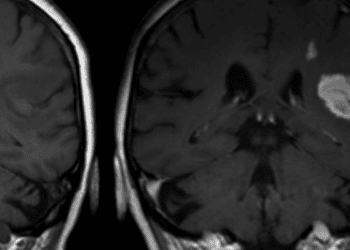Peri-operative interruption of DOACs associated with low rates of bleeding and thrombosis
1. The Perioperative Anticoagulation Use for Surgery Evaluation (PAUSE) cohort study evaluated the safety of standardized perioperative interruption of direct oral anticoagulants (DOACs) for patients with atrial fibrillation undergoing operative interventions. The rates of both major bleeding and arterial thrombosis were low during the study period.
2. Most patients had only minimal or no residual anticoagulant levels when measured at the time of the procedure.
Evidence Rating Level: 2 (Good)
Study Rundown: The management of direct oral anticoagulants (DOACs) in patients with atrial fibrillation who require surgical procedures is a common clinical question, and evidence for specific strategies has been lacking. The PAUSE trial was a multicenter, international prospective cohort study evaluated the bleeding and thrombotic outcomes for a standardized strategy of holding DOAC medications prior to and following operative interventions. Timing of cessation of the medications depended on the specific agents, patient renal function, and risk of bleeding associated with the operation. The study found that overall rates of arterial thrombosis and major bleeding were low. The vast majority of patients had minimal, or no residual anticoagulant effect at the time of the procedure.
The main strengths of the study were the multinational cohort, generalizability to a common clinical scenario, and simplified algorithm for DOAC management. The main limitations of the study were the cohort design allowing for selection bias, and relatively few patients undergoing neuraxial anesthesia.
Click to read the study in JAMA Internal Medicine
Relevant Reading: Perioperative interruption of direct oral anticoagulants in patients with atrial fibrillation: A systematic review and meta‐analysis
In-Depth [prospective cohort]: The PAUSE trial is a prospective cohort study that included patients with atrial fibrillation on DOAC therapy undergoing elective surgical procedures. Patients were excluded if they were undergoing more than one planned surgical operation during the 30 day follow up period, had cognitive impairment or psychiatric illness, or had renal function below 25 ml/min for apixaban users or CrCl level less than 30 ml/min for dabigatran or rivaroxaban users. The study employed a standardized protocol for cessation and re-initiation of DOACs depending on the drug used, renal function, and bleeding risk of the operation. The primary outcome was major bleeding and arterial thromboembolic events within 30-days of the operation. Secondary outcomes included the proportion of patients with undetectable or minimal residual anticoagulant level (<50 ng/mL) at the time of the procedure.
The study included 3007 patients with atrial fibrillation with 1257 (41.8%) in the apixaban cohort, 668 (22.2%) in the dabigatran cohort, and 1082 (36.0%) in the rivaroxaban cohort. The rate of major bleeding was 1.35% (95% CI, 0%-2.00%) in the apixaban cohort, 0.90% (95% CI, 0%-1.73%) in the dabigatran cohort, and 1.85% (95% CI, 0%-2.65%) in the rivaroxaban cohort. The rate of arterial thromboembolism was 0.16% (95% CI, 0%-0.48%) in the apixaban cohort, 0.60% (95% CI, 0%-1.33%) in the dabigatran cohort, and 0.37% (95% CI, 0%-0.82%) in the rivaroxaban cohort. The proportion of patients with minimal DOAC level at the time of the procedure was was 90.5% in the apixaban cohort, 95.1% in the dabigatran cohort, and 96.8% in the rivaroxaban cohort.
Image: PD
©2019 2 Minute Medicine, Inc. All rights reserved. No works may be reproduced without expressed written consent from 2 Minute Medicine, Inc. Inquire about licensing here. No article should be construed as medical advice and is not intended as such by the authors or by 2 Minute Medicine, Inc.








